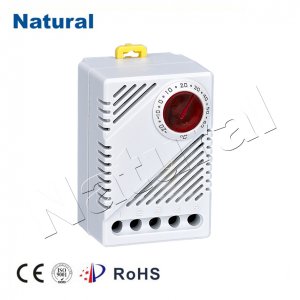In today's fast-paced world, the quest for comfort and energy efficiency is a top priority for homeowners and businesses alike. One often overlooked but essential component in achieving this balance is the humidity controller thermostat. In this article, we will delve into the world of humidity controller thermostats, exploring their functionality, benefits, and their role in enhancing our daily lives.

Understanding Humidity Controller Thermostats Humidity controller thermostats are devices designed to regulate both temperature and humidity levels within indoor environments. Unlike traditional thermostats that focus solely on temperature control, humidity controller thermostats offer a more comprehensive solution by monitoring and adjusting humidity levels as well.
These smart devices work by integrating humidity sensors into their systems, allowing them to measure and maintain the desired relative humidity (RH) level in a room. The ideal indoor RH typically falls within the 30% to 60% range, as this range not only ensures comfort but also contributes to a healthier indoor environment.
Enhanced Comfort
One of the primary benefits of humidity controller thermostats is the enhancement of overall comfort. Maintaining an optimal humidity level is crucial for avoiding problems such as dry skin, irritated eyes, and respiratory issues. These thermostats ensure that indoor air doesn't become excessively dry or overly humid, creating a more comfortable living or working environment.
Furthermore, humidity control plays a significant role in temperature perception. When the air is too dry, it feels cooler than it actually is, leading people to increase their heating settings unnecessarily. Conversely, when the air is too humid, it can feel warmer, causing individuals to lower their thermostats and potentially wasting energy. Humidity controller thermostats help maintain a comfortable temperature and reduce the need for frequent adjustments.
Energy Efficiency
Humidity controller thermostats also contribute to energy efficiency, which is crucial in reducing utility bills and minimizing environmental impact. By maintaining the proper humidity level, these devices help optimize heating and cooling systems. For instance, during the winter, a well-maintained humidity level can make a room feel warmer at lower temperatures, reducing the need for excessive heating. Conversely, in the summer, proper humidity control can make a room feel cooler without lowering the thermostat.
In regions with extreme climate conditions, humidity controller thermostats can yield significant energy savings over time. They achieve this by ensuring that heating and cooling systems run efficiently, consuming less energy and ultimately reducing greenhouse gas emissions.
Health Benefits
Apart from enhancing comfort and energy efficiency, humidity controller thermostats offer health benefits. Maintaining the right humidity level can help reduce the spread of airborne viruses, as dry indoor air can make individuals more susceptible to respiratory infections. Additionally, a balanced humidity level can alleviate allergy symptoms and promote better sleep, leading to overall improved well-being.
Conclusion
Humidity controller thermostats are a valuable addition to modern homes and businesses, offering a comprehensive solution to indoor climate control. By regulating both temperature and humidity, these devices enhance comfort, increase energy efficiency, and contribute to better health. As the world continues to prioritize sustainable and comfortable living, humidity controller thermostats are poised to play a vital role in achieving these goals. Consider installing one in your space to enjoy the benefits of optimized indoor climate control.
 28 items Patent
28 items Patent
 28 items Patent
28 items Patent
 28 items Patent
28 items Patent

